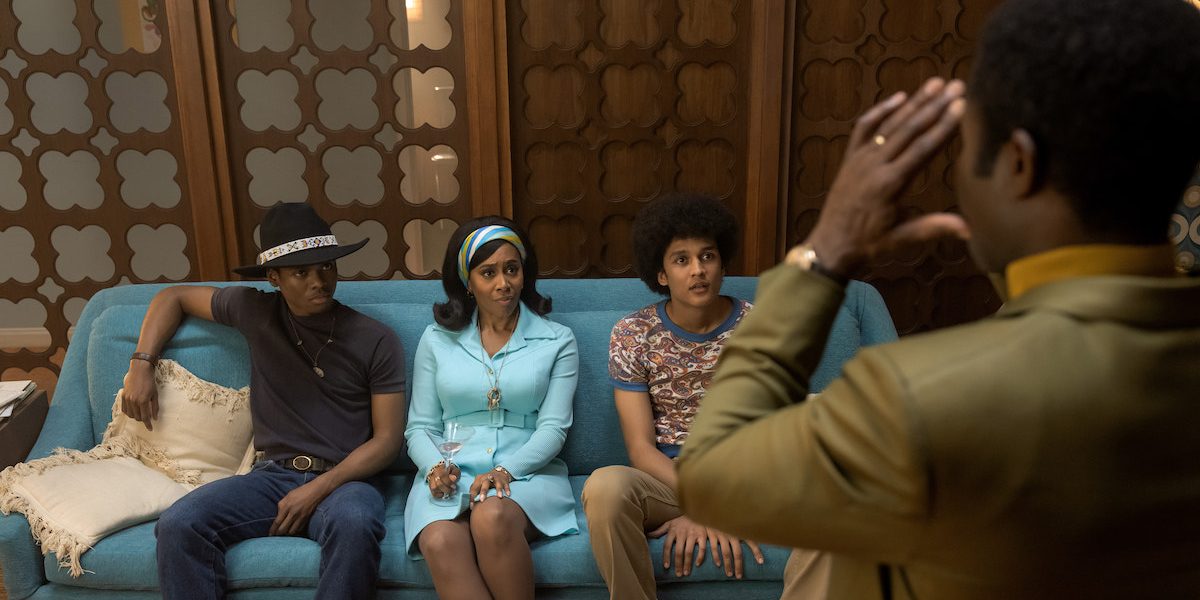Apple TV+’s ‘Government Cheese’ is a historical comedy-drama that takes a surreal tone to tell the story of a unique family. The focus of the show is on Hampton Chambers and his family, with whom he reunites after spending several years in prison. A lot has changed for him since then. For example, he has found God and wants to leave behind his life of crime. He is directing his energy towards creating inventions that he can sell to become rich beyond his wildest dreams. However, when he comes out of prison, his dreams are easier imagined than done. At the same time, he also has to win back the love and trust of his wife and two sons, who have moved on in his absence. Created by Paul Hunter and Aeysha Carr, the ten-episode series takes many twists and turns to deliver a tale that is heartfelt and realistic.
The Chambers are Loosely Inspired by Paul Hunter’s Family
What makes ‘Government Cheese’ such an enjoyable watch is how every character seems to be on a rather unbelievable path in a realistic setting. Interestingly, the show’s co-creator, Paul Hunter, also grew up in a similar environment. While writing the show and its fictional characters, he heavily drew from the background and chaos of the lives of his own family members. For Hampton Chambers, he was inspired by the life story of his father, who also went to prison and returned from it a changed man. As for Hampton’s inventive mind, the writer focused on his own work of selling cutting tools for an aerospace company.

Similarly, for the character of Harrison, Hampton’s younger son, he used himself to focus on the peculiarities of the fictional character. He gave Harrison his own interest in Native American culture and added Rudy, an Apache man he knew in real life. To keep things grounded, the writer also set the story in the San Fernando Valley, which is also where he grew up. When Carr was brought on board, she enhanced the characters by bringing her own family into the mold. Her father and mother had the spirit of an inventor, and that became an important point for her and Hunter to talk about and expand upon while creating the Chambers family.
Another layer was added to the characters when the actors entered the scene. David Oyelowo, who plays Hampton Chambers and is also the executive producer of the TV show, was highly entertained by the spirit of the story and was also surprised to discover that a lot of stuff, no matter how strange, was, in some ways, borrowed from Hunter’s real life. While there are exaggerations to support the drama and intrigue of the plot, the actor noted that the writer would always have an incident from his family or otherwise to back up the scenes and storylines set up over the ten episodes. This gave a sense of realism to the characters, which made them more interesting to inhabit and bring to life on the screen.
Government Cheese’s Late 60s Setting Gives It an Unexpected Edge
The events in ‘Government Cheese’ take place in the late 60s and early 90s. The events are primarily centered around 1969, which is when Hampton Chambers is released from prison. However, the show also uses flashbacks to give us more context of the story in terms of different characters. For Paul Hunter, it was the natural setting for the show because he grew up there in the early 70s and wanted to present the world that he rarely sees on the screen. He noted that the 70s were a politically turbulent time, and a lot was going on in the African-American landscape, but his family largely remained removed from all that, which is why we don’t see that political and cultural upheaval in the show either.

Hunter’s intention was to portray the bubble that he and his family had lived in, which he revealed was rather unbelievable for people in Hollywood, especially in the early days of his trying to shop around the script. He was told that the Chambers did not feel like a believable family, which seemed ridiculous to him because it was basically his own family’s story. Highlighting this difference from what is considered a normal experience for a Black family in that time period, the writer called the Chambers a variation of the infamous Addams, who defy expatiations of what normal means. At the end of the day, he wanted the show to be a representation of resilience and creativity that can emerge in the face of adversity and how some families and people are bound to be seen as different for their ideas, no matter what time period they are in.


